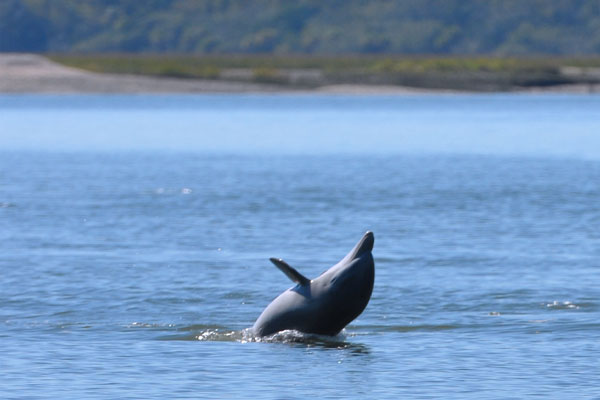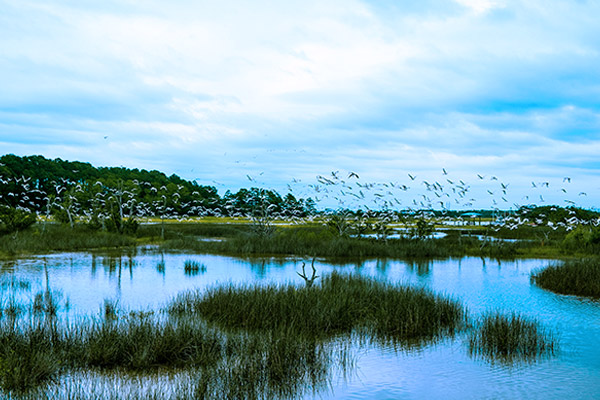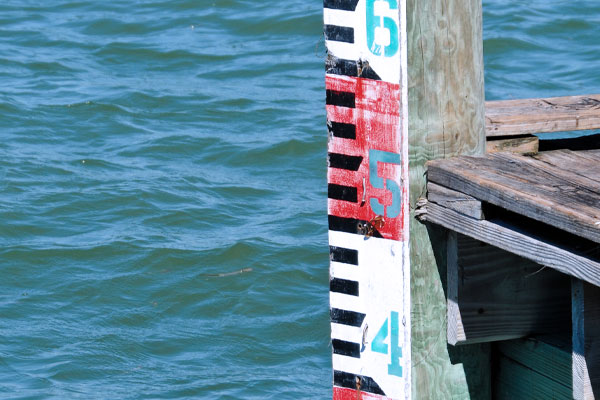
The Port Royal Sound
It is the lifeblood flowing through the Lowcountry in rivers, creeks, and inlets, enriching our lives, inspiring our arts and culture, fueling our economy, and supporting a wealth of wildlife.
The heart of this network of waterways is the Port Royal Sound, a dynamic ocean channel splitting the county in half, St. Helena Island and Beaufort to the north and Hilton Head Island and Bluffton to the south, feeding vast expanses of salt marsh and stretching far inland to parts of Jasper County.
While the ocean and its shoreline may be what draws so many to the Lowcountry, it is the Port Royal Sound that makes our area unique among the South’s coastal communities. Unlike fresh brown water rivers that originate in the mountains or coastal plains, the tributaries of Port Royal Sound, are tidally dominated and fed by smaller swamp derived black water rivers. There are many named rivers in our estuary including the Broad, Colleton, and May Rivers, but these are actually tidal inlets fed by the Atlantic Ocean.
Encompassing 1,600 square miles of land, marsh, and water the Port Royal Sound watershed is influenced mainly by the ocean, creating distinctive geological and environmental features.

The sand deposited by long-ocean currents has contributed to the formation of barrier islands along the coast. Today, more than 60 sea islands, including barrier islands, hummock islands and sea islands populate the Port Royal Sound area. The islands help protect the mainland from the powerful forces of wind, waves, storm surges, flooding and hurricanes.

Because there are no mountain-fed rivers depositing sediment on the bottom of the channel, the depth of the water in the Port Royal Sound can reach 60 feet, making it the deepest natural harbor south of Chesapeake Bay.
Equally notable, the salt content in the sound is very high. With so little freshwater flowing into the channel, the water is virtually as salty 20 miles inland as it is in the Atlantic. The high salinity, combined with the deep water, allows sea turtles, sharks, rays and dolphins to travel from the ocean to its upper reaches.

Port Royal Sound also boasts more than 100,000 acres of salt marshes – about a third of the marshland in the state. Flooded daily at high tide, these estuarine ecosystems are highly productive habitats that provide food and shelter for an extraordinary array of terrestrial and marine animals.

The difference between low and high tide in Port Royal Sound averages 8.5 feet – one of the biggest tidal ranges on the southeast coast. An estimated 250 million gallons of water per minute move with the tides, delivering nutrients to the sound and flushing out pollutants, which helps keep our waters clean and healthy.